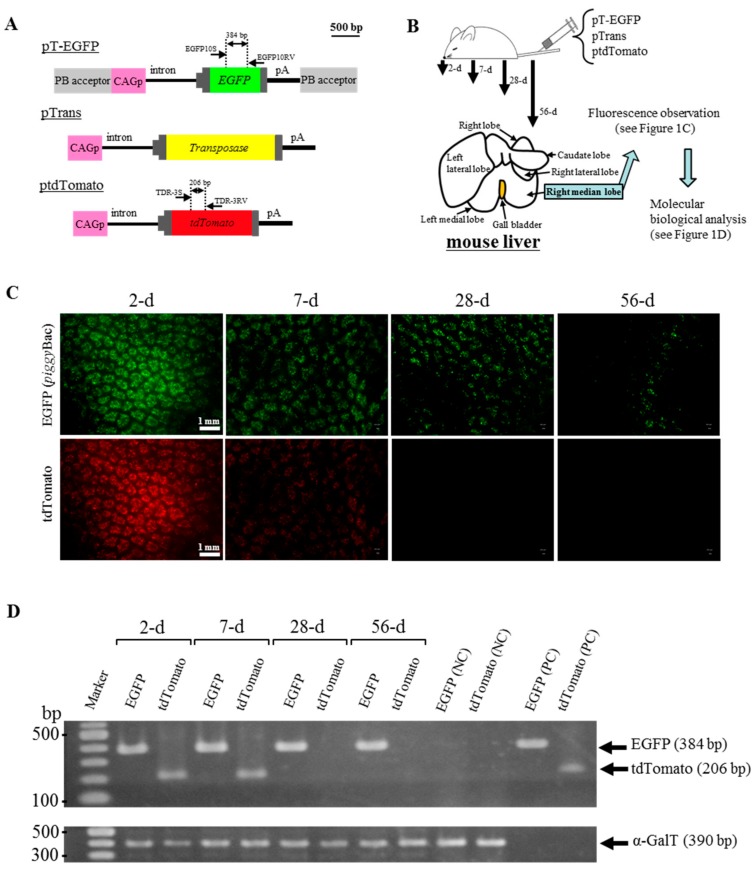Figure 1.
Hydrodynamics-based gene delivery and PB transposon system enable long-term gene expression in murine liver. (A) Structure of plasmid vectors used. The position of primers is shown above each plasmid. CAG, CMV enhancer + chicken β-actin promoter; intron, second intron of rabbit β-globin gene; EGFP, cDNA for enhanced green fluorescent protein; tdTomato, cDNA for tandem dimeric Tomato; pA, poly(A) sites; PB acceptor, acceptor site in PB system; (B) Schematic representation of experimental outline. Two PB-related plasmids (pT-EGFP and pTrans) and a non-PB plasmid ptdTomato are injected into adult ICR male mice via the tail vein by HGD. On 2, 7, 28, and 56 days after gene delivery, right median lobe of the liver is dissected for fluorescence observation and molecular biological analyses; (C) Fluorescent images of the right median lobe of the liver dissected 2, 7, 28, and 56 days (d) after gene delivery. tdTomato-derived fluorescence was observable on the specimens 2 to 7 days after gene delivery, whereas EGFP-derived fluorescence was still observed on the specimens 28 to 56 days after it; (D) PCR analysis of genomic DNA isolated from the right median lobe of a liver dissected 2, 7, 28, and 56 days (d) after gene delivery. The same amounts of genomic DNA were PCR-amplified using primers for detection of the endogenous α-GalT gene and used as internal controls. Negative control (NC), genomic DNA from intact mouse tail used as a negative control; Positive control (PC), plasmids pT-EGFP and ptdTomato (5 ng) used as positive controls for EGFP and tdTomato cDNA.

